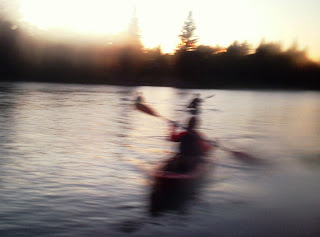It's hard to give tips to skiers if I don't know how they ski, but I think the most important thing in skiing is you have to be having fun. If you're having fun, then everything else will come easy to you. --Lindsey Vonn
I spent a lot of time cross-country skiing. I enjoyed the pace. Skiing in and out of the pines, birches and maples along the lakes of Minnesota or the ice-covered Red River. Dress in layers and moving briskly, but not uncontrollably fast, up and down the simple hills and slopes. An easy snowplow to a stop before crashing into trees or bushes along the river. Certainly not hurling yourself down a mountain.
"You are one with your skis and nature." said Norwegian Fridtjof Nansen explorer and Nobel Peace Prize laureate, "This is something that develops not only the body but the soul as well, and it has a deeper meaning for a people than most of us perceive." A polar hero in Norway, Nansen, led a Greenland expedition on skis in 1888 and made an attempt to be the first to reach the North Pole in 1895. Nansen and Hjalmar Johansen struck out for the North Pole on skis after leaving their icebound ship The pair reached latitude 86°14′ North before they abandoned their attempt and turned southwards, only reaching Franz Josef Land. It would be another 14 years before Robert Peary would finally reach the North Pole.
That was the skiing I knew. No crowds, no chair lifts; only deserted trails, for a sport promising solitude. Out with long classic skis and a frost covered beard, I can recall being like those polar explorers, moving methodically along in frigid conditions over even terrain.
Downhill skiing film maker Warren Miller said, “If you don't do it this year, you will be one year older when you do.” Winter snows have returned to the Sierra Nevada Mountains after nearly a four- year absence. The slopes are covered with snow-pack and skiers. The projected El Nino is bringing a line up of snowstorms to northern California, a welcome relief after several years of drought.
At Kirkwood Mountain Ski Resort southwest of Lake Tahoe, the elevations shoot to the sky ranging between 7,800 to 9,800 feet. Located in a geographical predisposition to receive the lightest, the driest, and the most snow in the Tahoe area. It offers the best of both worlds to area skiers. A 2000-foot vertical drop in terrain with high angle groomed trails for the pros, as well as gentle slopping runs for beginners. Just down the road is the Kirkwood Cross Country & Snowshoe Center featuring 80km of groomed trails with spectacular scenery.
Now I haven't downhill skied in years, so I signed up for a session of lessons to hone my skills and up my confidence. Getting a lesson from someone trained to teach you how to ski will lead to dramatic improvements and a better experience than trying to learn a friend or spouse. My instructor, a young woman named Teal Barmore, quickly accessed my lack of skills and helped me get started with some basic techniques of skiing.
"You can't get hurt, unless you fall." Warren Miller said. That's whats going through my head when tipped my skis down my first slope. I expected to fall sometime during the day. Falling is of course part of skiing. Like humorist Dave Barry said, "Skiing combines outdoor fun with knocking down trees with your face." I stayed clear of the trees, but had trouble just getting off the lift. During my three-hour class with Teal, I worked on my balance, keeping my legs squarely with my shoulders pointing downhill and trying not to watch the tips of my skis instead of looking forward. Teal suggested on looking about 10-feet ahead at all times. On one run she even proposed holding my ski poles out in front of me, like I was water-skiing, so I could focus more on what was in front of me. The most important lesson of course, how to turn, slow down and mostly stop, I practiced that technique right away pushing my tips together as I turned right and left while moving down the slope.
The mountain, of course, led this dance and I was its rigid and out of step partner while working on my balance, agility, control and understanding of the sport. The next day, however I felt more at home while trekking along the loop through the meadow with my cross-country skis. It is the first time I've cross-country skied since moving to California. I had to smile, thinking it was a lot like skiing in Minnesota, except the for the stunning view. A mist hung over the mountain dropping in and out over the peaks. And when the morning sun did break through the grey of the clouds, the valley glistened in dazzling white. I chased my wife Debbie along the trails in and out of the snow-capped trees and through open areas only hearing the sound of our swooshing skis.
And that is a part of the beauty in skiing. The sound of the glide, that gentle 'hush" the ski makes whether going down hill or cross-country moving you forward and along. "I find music distracting" said Olympic skier Julia Mancuso, "It takes me out of my head. What I love so much about skiing is the peacefulness."































